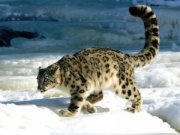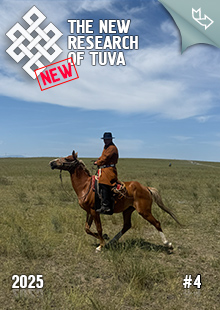 To capture an irbis and to mark him with a satellite collar – that was the task that the scientists from A.N. Severtsov Institute of problems of ecology and evolution of RAN (IPEE RAN) set themselves. The zoologists worked in the protected zone of the Mongun-Taiga part of the “Ubsunur depression” nature preserve from June to middle of August.
To capture an irbis and to mark him with a satellite collar – that was the task that the scientists from A.N. Severtsov Institute of problems of ecology and evolution of RAN (IPEE RAN) set themselves. The zoologists worked in the protected zone of the Mongun-Taiga part of the “Ubsunur depression” nature preserve from June to middle of August.
Vyacheslav Rozhnov, the leader of the project, deputy director of IPEE RAN, shared his impressions with the staff of the Russian Geographic Society site.
This expedition is the first step in the development of a large program for study of the irbis population in the south of Russia, - he said. This is the first time that field studies were conducted in this part of the Altai-Sayan region.
The program of study and monitoring of the snow leopard population in South Siberia is one of five projects for protection of rare species of animals; the realization and financing of these projects have been transferred to the Russian Geographic society from August 1, 2010. The Amur tiger, white bear, Far-Eastern leopard and beluga whale – the work will be conducted under the personal supervision of the chairman of the Curator Board of the geographic society – Vladimir Putin.
The first good snapshot of a snow leopard was made by one of the 40 photo-traps a month after the work started. They were all set up on the slopes of the Tsagaan-Shibetu ridge. Other photographs were taken, but they were not suitable for scientific analysis.
Snow leopards are extremely cautious and curious, - explained one member of the expedition, Jose Ernandes-Blanco. – They notice any change, and when they see a new object, they come up to the photo-trap, sniff it, rub against it, walk around it. As a result, the photos show only blurry pieces of spotty fur.
The photo-traps also snapped marmots, snow field mouse, long-tailed ground squirrel, tarbagan, mink, chipmunk, fox, as well as birds, specifically “ular”, a species also listed in the Red Book, and a prey of irbis.
As the leader of the expedition, worker of IPEE RAN, Andrei Poyarkov, noted, the scientists did not meet a single irbis the entire summer, and there were very few mountain goats, who constitute the main food source for the predator.
We have not seen a single adult male mountain goat. Apparently the entire cluster, which lives on our terri9tory in winter, migrates to Mongolia in the summer, and some of the females and young follow them, - the leader of the expedition explained.
Last winter was exceptionally brutal in Tuva, and in Mongolia almost half of domestic livestock was lost because of starvation and cold. It appears that it is the same situation with mountain goats. A proportion of the population probably died because of starvation and brutal cold. This might have had an effect on the snow leopard distribution this season. That is the opinion of Dmitri Alexandrov, one of the expedition members. The scientists will try to verify if these calculations are true in future expeditions. Having collected samples of life processes of the irbis, they will perform studies in molecular genetics, hormone studies, and parasitologic analysis of the material in the labs of IPEE. They are planning to come back to Tuva in September, and then again in winter. And they hope fervently that they will be able to mark the animals with satellite collars.

